This article is written by Richa Goel, Priyanka Sharma, Tejaswini Kaushal and it is further updated by Jaanvi Jolly. In this article, the doctrine of separation of powers and its ideological development has been traced starting from Aristotle to Montesquieu. The three major postulates in the theory have also been discussed. It also analyses the applicability of the doctrine in India and other countries. Additionally, the merits and the demerits of the doctrine have been demarcated.
Table of Contents
Introduction
“…there is no liberty if the powers of judging are not separated from the legislative and executive.” -Montesquieu
The separation of powers is a prerequisite for the efficient administration of federal democratic states. According to the doctrine of separation of powers, the state power is divided into three different branches- legislative, executive, and judiciary. Each branch has its own independent power and demarcated responsibility. This separation is essential to ensure that one branch does not interfere with the working of the other two branches.
Basically, it is the rule that every State Government should follow in order to enact a law, implement the law, and to check its validity. If this principle is not followed then there will be more chances of misuse of power and corruption. However, adhering to the doctrine will reduce the chance of enacting a tyrannical law as the legislature will be aware that it will be checked by another branch. It aims at the strict demarcation of power and tries to bring exclusiveness to the functioning of each organ.
In India, functions are separated from powers rather than the other way around. The idea of the separation of powers is ideologically followed in India, unlike in the United States. Although the theory of separation of powers is not expressly recognised in the Constitution in its absolute form, the Constitution does provide provisions for a fair division of duties and authority among the three branches of government.
Meaning of separation of powers
The definition of separation of powers is given by different authors as follows:
Wade and Phillips provide three elements of the idea of separation of powers:
- That one branch of government should not carry out the duties of another, such as giving ministers legislative authority;
- That one branch of the government should not exert control over or interfere with another branch’s performance of its duties, such as when the judiciary is separate from the executive branch or when ministers are not answerable to Parliament ;
- That the same individuals should not serve in more than one of the three branches of government, such as sitting as Ministers in Parliament .
Richard Benwell and Oonagh Gay define the idea as, “Separation of powers refers to the idea that the major institutions of state should be functionally independent and that no individual should have powers that span these offices.”
Marchamont Nedham, writing under Cromwell’s Protectorate in 1656, stated that separation of power requires separation of legislative and executive powers into different “hands and persons.”
In general, the meaning of separation of powers can be categorised into three features:
- A person forming a part of one organ should not form part of another organ.
- One organ should not interfere with the functioning of the other organs.
- One organ should not exercise the function belonging to another organ.
The separation of powers is based on the concept of “trias politica”. This principle visualises a tripartite system where the powers are delegated and distributed among three organs outlining their jurisdiction each.
The doctrine of separation of powers in a rigid sense means that when there is a proper distinction between three organs and their functions and also there should be a system of check and balance.
The doctrine of separation of powers in a broad sense means that when there is no proper distinction between three organs and their functions, however a broad division is in place.
Historical development of separation of powers
Aristotle
Aristotle was a Greek philosopher and one of the disciples of Plato. His most notable work was ‘Politics’. However, it was in his work titled ‘Nicomachean Ethics’ that he discussed the correct way of life and the appropriate form of government to fulfil that correct way of life. He states that one must live life virtuously and the government structure which enables such life must be preferred.
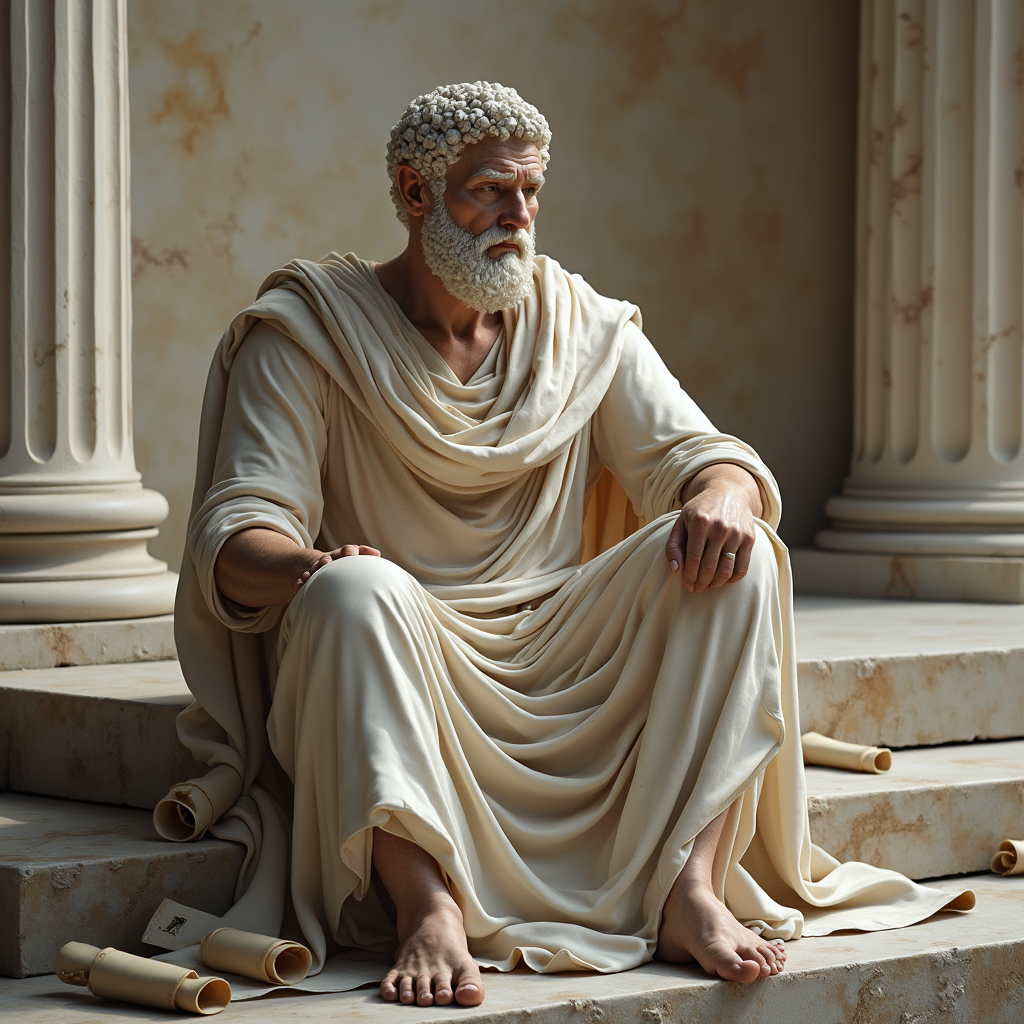
The specific details of the ideal government structure are explored in Aristotle’s “Politics,” a work divided into eight books. The third book addresses the concept of what we now refer to as the separation of powers. In the fourth book, titled “The Best Regime,” Aristotle aims to outline the form of government that governs most effectively while avoiding tyranny. Aristotle evaluates different types of government such as monarchies, aristocracies, and democracies and their respective advantages and shortcomings. He discusses the importance of balancing the interests of different social classes and ensuring that political power is distributed in a way that prevents any one group from dominating unjustly.
Polybius
Polybius was one of the first theorists who deliberated upon the idea of separation of powers. His contribution to the idea of separation of powers was highlighted by Scott Gordon in his book about checks and balances. His most important and renowned work was ‘’The Histories”’. This was an account of the Roman empire. He was a hostage in Rome for about 17 years, during which he understood the depth of the system of governance present in the state. In his books, the development of the Roman setup from the 5th century BC to the fall of the Roman empire was traced. He believed that the Roman Constitution was an ideal, from which the others should try to learn. While the term “separation of powers” was nowhere mentioned in the work of the thinker, his broad ideas based on the analysis of the Roman system, nevertheless, were the foundation stones for the development of the theory.
John Calvin
He did not provide an explicit theory of separation of powers, however, he did provide his ideas on governance wherein different authorities were granted different areas of activity.
He presented three components of the government:
- The Magistrate: who is the protector or the guardian of the laws.
- The Laws: as governed by the magistrate.
- The people
Calvin preferred a form of aristocracy or rather a blend of democracy and aristocracy. Generally, an aristocracy is understood to be a state where power is concentrated in the hands of the wealthy, but as per Calvin in the truest form, it is a form of government where there is the rule by the best. He believed that in a democracy, there was always a fear of the power going into the hands of the worst of men, as he was aware of the man’s fallen condition. This idea along with his detest towards totalitarianism served as a predecessor to the development of Constitutional governments where the people decided who the best are that will go to them. He also was against monarchy as he thought that the government in the hands of many is better than the government in the hands of a few.
John Locke
The following were the ideas propounded by John Locke in relation to the ideas of separation of powers:
- The idea of the social contract: The origin of the state as per Locke can be found in the social contract. He proposed that as a result of the social contract among the individual, the government came into being. This government is duty bound to protect the individuals natural rights. This concept focuses on the authority of the government in the consent of the people which acts as a foundation for creation of a system of checks and balances.
- The idea of limited government: As per Locke’s vision, the government was to provide only a few functions. His idea of limited government was an essential aspect in the foundation of the concept of separate power and functions being allotted to different branches of the government. This would avoid the concentration of power in any single branch.
- The idea of division between legislative and executive: While the actual idea of separation of powers between the different branches was not discussed by Locke explicitly. He did differentiate between the legislative and executive functions formed by the state. He envisioned that while the legislative branch should be responsible for formulation of laws, the executive should be responsible for implementation of those laws. Therefore, the idea of separate Arenas of functioning was clearly present in his thoughts.
- The idea of checks and balance: As per Locke,, the primary function of the government was the protection of the natural rights of the citizens including life, liberty, and property. He propounded that the government must be accountable to the people, and therefore a system of checks and balances must be put in place. His idea of limited government and insurance of accountability to the people supported development of the principle of separation of powers.
While the explicit idea of separation of powers per se, did not find mention in Locke’s work. Nevertheless, his ideas of government accountability to people, distinct roles of the legislative and the executive, indeed contributed to the development of the doctrine of separation of powers.

Montesquieu’s theory on separation of powers
“There would be an end of everything where the same man or the same body exercise the three powers” -Montesquieu
The term “separation of powers” or “trias–politica “ was initiated by Charles de Montesquieu, who was a French scientist. He articulated this principle scientifically, accurately and systemically in his book “Esprit des Lois” (The Spirit of Laws) which was published in the year 1785. He discovered that when power is concentrated in the hands of a single person or a group of people, a despotic government emerges. To avoid this predicament and to limit the government’s arbitrary nature, he argued that the three organs of the state, the executive, legislative, and judiciary, should have a clear distribution of power.
In the “Spirit of Laws”, the quintessential work of Montesquieu, is a short chapter titled “The Laws”, which establish political liberty with regard to the Constitution. Hearing this we find the classical theory of separation of powers, which is an everlasting doctrine which has modelled the form of the present nation states. The division of the government into three branches that is the legislative, the executive and the judicial where in each of them remain independent of the other is a chief principle of the modern day Federal Constitutions.
The doctrine of separation of powers presents a dual aspect. The first is a negative one. It implies non-encroachment in the sphere of each other and positively, it connotes the maintenance of independence and integrity of each of the branches.
The popularity of the work, “Spirit of Laws” has a dual cause. Firstly, the momentum of the era of renaissance coupled with the rise of liberalism presented a ripe condition for new and progressive political doctrine. Secondly, the introduction of new concepts of liberty and nation states had to be established on some form of government structure. This structure was provided by Montesquieu wherein he separated the legislative from the executive waters and placed the rock of judiciary between them.
He intended to check the tyrannical exercise of power by rulers in monarchies. He sought to provide a check upon the power that various organs held. Montesquieu’s model of separation of powers states that in every governmental set up, we find three different powers.
The first being a legislative power by virtue which the prince or the magistrate in act the laws, the second is the executive power by which the decisions about peace or war, sending or receiving of Ambassador establishment of public security and safety against invasions is decided and by the third, that is the judicial power, he punishes the criminals and determines the dispute arising between individuals.
Where the executive and the legislative powers are found in the same person or the same body of people, it creates a condition of absence of liberty. This is because there is an apprehension that the monarch or the Senate would enact tyrannical laws and execute them in a tyrannical manner. Further, if the judicial power is not separated from the legislative or the executive power, then the life and liberty of the people would be exposed to arbitrary control. Head and the judge would be the legislator, and in case “ it is joined by the executive power, the judge might behave with violence and oppression”.
He is a believer in supremacy in political liberty. This ideal is found in moderate governments, wherein there is no abuse of power. To prevent this abuse of power the model of checks and balance has to be instilled in a state. Therefore, he deciphered a link between a state with separation of powers, presence of political liberty and the system of checks and balances.
Montesquieu’s ideal state was interpreted by subsequent theorists as a state where the powers are frequently mixed. However, the departments are separate. He proposes the power of the executive to assemble and probe the Parliament . The general executive power to restrain the encroachment of the legislature, the power of the legislature to investigate executive conduct. Therefore, it does not pronounce the performance of all the legislative functions by one body and all the executive functions by another rather he wanted to create a grand coordinate department, having to do in general with making the laws and others with execution of them, but at the same time, each arm with defensive auxiliary powers. This further is the aspect that in order to keep a check on the power, we required departmental independence and not complete functional separation.

The paradigm shifting impact of Montesquieu’s work is reflected by the statement of Justice Holmes. He says that the “Spirit of Laws” has had dazzling success, and since then probably none has done as much to remodel the world as any product of the 18th century, which burned so many forests and sowed so many fields.
Constitutional status of separation of powers in India
Article 50 of the Constitution of India talks about the separation of the executive from the judiciary, however, as being a Directive Principle of State Policy, it is not enforceable. In the case of Divisional Manager, Aravali Golf Club vs. Chander Hass (2007), the court has stated that if there is a law, the judges can certainly enforce it. However, the judges cannot create a law and seek to enforce it. This is because under the Indian Constitution, we have adopted a broad scheme of separation of powers according to which one organ of the government should not interfere into the domain of the other.
Although strict separation of powers is not followed in India like the American Constitution, the system of check and balance is followed. However, no organs are to take over the essential functions of other organs which is the part of the basic structure, not even by amending and if it is amended, such amendment will be declared as unconstitutional.Going through the provisions of the Constitution of India one may be ready to say that it has been accepted in India. Under the Indian Constitution:
| Legislature | Parliament (Lok Sabha and Rajya Sabha)State legislative bodies |
| Executive | At the Union level- PresidentAt the State level- Governor |
| Judiciary | Supreme Court, High Court and all other Subordinate Courts |
Three organs in Separation of Powers
Legislative
The primary function of the legislature is to enact laws, which reflects the will of the State and underpins the autonomy of its governance. It plays a crucial role in the functioning of the executive and judiciary by setting the legal framework within which these organs operate. The legislature is considered the foremost of the three branches of government because lawmaking is fundamental to the execution and application of laws. The Parliament is empowered to legislate on any matter, provided it conforms to the Constitution. The judiciary may give advice and suggestions to the legislature about the framing of new laws and amendment of certain legislation but it cannot overtake the function of the legislature.
The legislature is the primary law making body, however, every law, once passed by both the houses of the Parliament or the house of the State Legislative Assembly and State Legislative Council, wherever it is present, has to obtain the consent of the President or the governor, respectively in order to become an Act. Therefore, the process of a bill to an act attains finality only when the President gives assent to it as per Article 111 of the Constitution. Here also we see a collaborative role of the legislature and the executive.
At the central level in India, the Parliament is the primary law-making body, while State Legislative Assemblies and Councils perform this role at the state level. These bodies debate and shape the laws that address national and regional needs. Additionally, the legislature has the authority to amend the Constitution, subject to the special majority requirement outlined in Article 368.
The members from the legislature, either the Rajya Sabha or the Lok Sabha are selected to be a part of the council of ministers, which is the executive body responsible to aid and advise the President. The council of ministers who are responsible to advise the executive head of the state are collectively responsible to the Lok Sabha. Any government would only be in power till the time the house of the people retains their confidence in them.
While the legislature is the main body responsible for creating laws, there are instances where the President can exercise legislative powers. For example, under Article 123, the President can issue ordinances during Parliamentary recesses or emergencies. Similarly, at the state level, the Governor can also enact ordinances under specific circumstances.
Executive
This organ is tasked with implementing, executing, and enforcing the will of the state as defined by the constituent assembly and the legislature. The executive branch serves as the administrative arm of the government and is often referred to as the “mainspring” of governance. If the executive branch falters, it can disrupt the balance and functionality of the entire government. In a narrower sense, the executive includes the head of state, advisors, departmental heads, and their respective ministers.
In India, the executive is led by the President and is supported by the council of ministers, who are headed by the Prime Minister . Chapter I of Part V of the Indian Constitution addresses the executive branch of government. Unlike the American Constitution, which explicitly states that executive power is vested in the President, the Indian Constitution, under Article 53(1), similarly vests executive power in the President at the central level and in the Governor under Article 154(1) at the state level. However, the Constitution does not include specific provisions regarding the vesting of legislative and judicial powers in distinct organs, as it does for the executive.
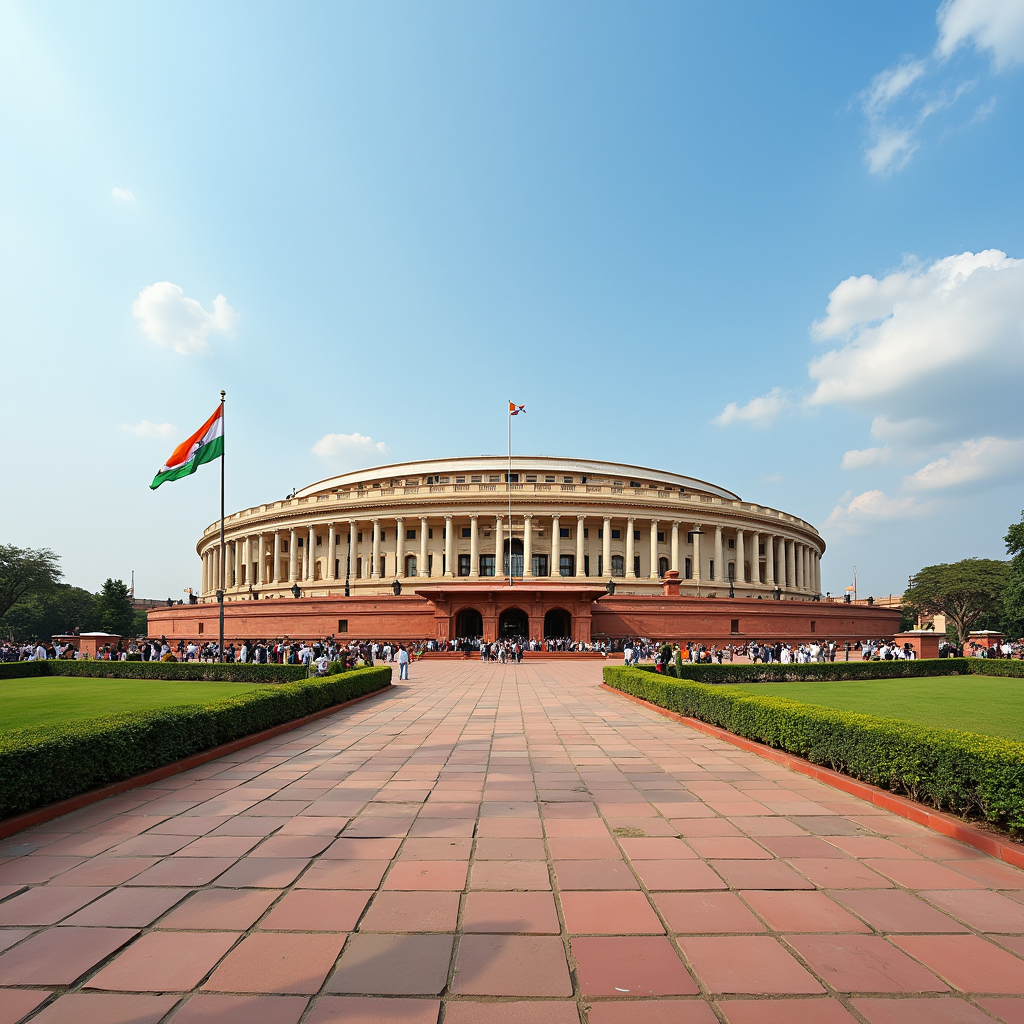
The President of India, as the head of the executive, is elected by an electoral college consisting of the members of both houses of Parliament and the legislative assemblies of the states, effectively making the legislative branch responsible for this election. Additionally, the President can be impeached for violating the Constitution, with charges being initiated by either house of Parliament according to the procedure outlined in Article 61. If a resolution for removal is passed by a special majority in both houses, the President can be removed from office. Thus, the legislature not only elects the head of the executive but also has the authority to remove them.
Similarly, the Vice President of India, who serves as the ex-officio Chairman of the Rajya Sabha according to Article 64, is elected by the members of both the Rajya Sabha and the Lok Sabha, which collectively constitute the Parliament or legislature. The Vice President can be removed from office by a resolution passed by a simple majority in the Rajya Sabha, with the approval of the Lok Sabha, as per Article 67. In cases where disputes arise concerning the election of the President or the Vice President, Article 71 mandates that the Supreme Court will investigate and resolve such disputes, with its decision being final. This illustrates the interaction between the executive and the judiciary.
India operates under a Parliamentary form of government characterised by a close relationship and coordination between the legislature and the executive. Although executive power is constitutionally vested in the President, the real executive authority lies with the Prime Minister and the Council of Ministers. The President serves primarily as a nominal head of state. According to Article 74(1) of the Constitution, the President must act in accordance with the aid and advice of the Council of Ministers, led by the Prime Minister. The President also appoints the other ministers on the advice of the Prime Minister. Further, as per Article 75, the council of ministers is appointed by the President on the advice of the Prime Minister and they would hold their office during the pleasure of the President.
If we analyse carefully it is clear that doctrine is not accepted in a rigid sense in india. The executive is a part of the legislature and the executive is accountable for its conduct to the legislature and also it derives its authority from the legislature.
Judiciary
It refers to those public officers whose responsibility is to apply the law framed by the legislature to individual cases by applying the law legislated by the Parliament . The Indian judiciary is a key pillar of the Indian government, responsible for interpreting the law, ensuring justice, and upholding the Constitution. It operates independently of the executive and legislative branches, ensuring a balance of power within the federal structure of India
In the Indian system, we have an hierarchy of courts starting from the lower judiciary to the Supreme Court of India. They have been given the task of adjudication of disputes whenever they arise, these can be either civil disputes or criminal offences. While the statutes or legislations are made by the legislature, their actual implementation and resolution of conflicts arising in their implementation are dealt with by the judiciary. Further, the conflict between the citizens and the state or between two states or between centre and the state are also adjudicated upon by the judiciary. In that sense it acts as the balancer of rights in the society.
Our Constitution is based on the doctrine of separation of powers and even though the judiciary is a self-sufficient and an independent organ, some interference of the executive and the legislature can be seen under the Constitution as a measure of checks and balances.
Article 124, which provides for the establishment of the Supreme Court states that it is the Parliament who has the power to prescribe the number of judges for the Supreme Court at the beginning of the Constitution. This number was seven along with the chief justice, but now by the Supreme Court Number of Judges) Amendment Act 2019, the number has been increased to 33 excluding the chief Justice of India.
As per Article 124(2) the official appointment of every judge of this Supreme Court is done by the President, and in case a judge decides to resign, he addresses his resignation to the President.
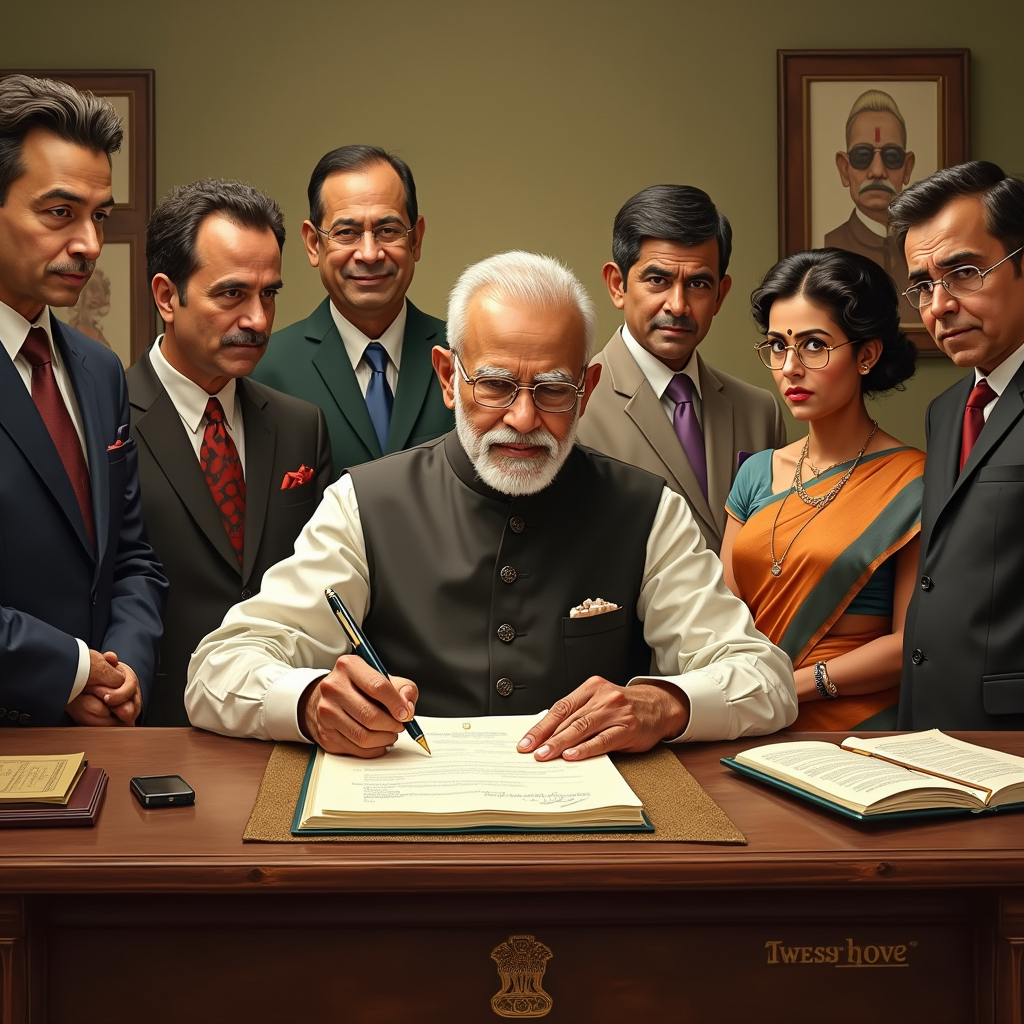
The salary, privileges and allowance of the judges are determined by the law made by the Parliament. This power of the Parliament cannot be used to create a variation in situation which is disadvantageous for the judges after they have been appointed as per Article 125.
The High Court under Article 226 and Supreme Court under Article 32 are given the writ jurisdiction. Further by the doctrine of judicial review according to which any law passed by the legislature can be declared void by the judiciary if it is inconsistent with the fundamental rights provided by the Constitution.
The independence of judiciary is also ensured by provisions which provide the judiciary the power to perform the administrative actions including formulation of regulations, issuing directions to subordinate courts and framing the rules regulating their own procedure. Further, to ensure independence the Constitution prohibits the discussion on the conduct or working of the judiciary in the Parliament except where impeachment proceedings are ongoing.
So it is presumed from the provisions of the Constitution that India being a Parliamentary form of government does not follow the absolute separation. There is an amalgamation of the powers where the connections between the different wings are inevitable and it can be drawn from the Constitution itself. Every organ performs all types of functions in one or other form subject to the check and balance by other organs. All three organs are interdependent because India has a Parliamentary democracy. This does not mean that it is not accepted in India, it has been accepted up to a certain extent.
Functional overlap among organs of the government
In the case of Ashwini Kumar vs. Union of India (2023) the Supreme Court acknowledged the fact that the classical theory of separation of powers as was envisaged by Montesquieu, which, in the present day forms, the bedrock of the American setup is the inspiration for the Indian Parliamentary democracy. In our country, the executive and the legislative in terms of the powers and functions are linked and there is often an overlap of the person they consist of.
The Indian Constitution provides a division of the powers, roles and functions between the organs of the state. The legislature executive and the judiciary. All of these branches are bound by their boundaries and limits as fixed by the Constitution in order to prevent any transgression by any of them into the powers functions in the rules following within the domain of the other.
Instances of law making by the judiciary
Honourable Chief Justice of India Subba Rao, in the case of I.C. Golaknath vs. State of Punjab (1967), stated that “the expression declared is wider than the words found or made while declare means to announce in opinion, whereas the latter involves the process while the former expresses the result the law declared by the Supreme Court is the law of the land to deny this power to this Court on the basis of some outmoded theory that the Court only find law but does not make it is to make ineffective. The powerful instrument of justice placed in the hands of the highest judiciary of this country.”
MP Jain in his article, ‘the Supreme Court and the fundamental rights’ stated that the idea that the judges only declare the law and do not make it has been discarded even in Britain and there exists a general consensus of opinion that new laws are created by the judiciary. That is to say, wherever a court applies and establishes rule or principle to a new situation or a set of facts, new law is being created.
Under Article 142, the Supreme Court has been granted extremely wide powers which can be used to do complete justice in any case where the laws are found to be inadequate for the grant of relief. The Court makes its jurisdiction under Article 142 of the Constitution.
A very pertinent example of the court using this power is in the case of irretrievable breakdown theory. This ground for dissolving a marriage has not been expressly provided by the state is Hindu marriage act or the special marriage act. Nevertheless, in appropriate situations, the Court may grant divorce to the parties to the marriage using its extraordinary powers provided under Article 142.

Similarly, in the case of Vishakha vs. State of Rajasthan (1997), where the Apex Court provided directions in the area of protection from sexual harassment at workplace, till the vacuum is filled by a legislation.
Further, in the case of Vellore citizens welfare forum vs. Union of India (1996), the Supreme Court recognised the principles of ‘sustainable development’, the ‘precautionary principle’ and the ‘polluter pays principle’ by which they became a part of Indian law. In the case of M.C Mehta vs. Union of India (1986), which is also known as the ‘oleum gas leak case’, the doctrine of ‘absolute liability’ was devised by the Apex Court to deal with the situations where the hazardous industries are built, which ends up causing death and damage to the citizens due to a mishap.
Legislative authority to punish in case of breach of privilege
Either house of the Parliament or the State Assembly have been granted specific rights and immunities by the Constitution. In case any of such immunity is violated, either by the member or a stranger, it is said that they have committed an offence of ‘breach of privilege’. The Parliament and the State Assembly have the power to formulate their own regulations on the procedure for privilege motion as well as on the possible punishment for the said offences. Some of the examples of breach of privilege are publication of secret sessions, speaking, or gross writing about the character of members, disseminating, manipulative, reports of house proceedings, etc.
A set of rules has been formulated under the rules of procedure and conduct business in Lok Sabha and the rules of procedure and conduct of business in Council of states.
Article 122 and Article 212 of the Constitution provide that the validity of the proceedings of the Parliament or the legislature of the state shall not be called in question in any court on the ground of alleged irregularity of procedure. These provisions provide protection to the Parliamentary process from any judicial intervention. Thereby in punishing the member or any stranger of the breach of privilege, the legislature performs some sort of judicial functioning.
Tribunals and other quasi-judicial organisations of the executive carrying out judicial functions
The principle of judicial independence and separation of powers are intertwined and have been held as part of the basic structure of the Constitution. Article 323A which provides for the establishment of administrative tribunals by the Parliament to adjudicate disputes related to recruitment and condition of service of persons appointed to public services was added by the 42nd Constitutional Amendment. The Central Administrative Tribunal set up in 1985 now has 17 benches and exercises original jurisdiction in matters related to recruitment and service of public servants. Article 323B, which was also inserted by the 42nd Constitutional Amendment empowers the Parliament and the state legislature to set up tribunals to adjudicate disputes relating to taxation, industry and labour, rent and tenancy land reforms, etc.
This aspect of excessive ‘tribunalisation’ is often criticised as being against the doctrine of separation of powers. It is seen as an encroachment of powers by the Parliament .
In the case of Roger Matthew vs. South Indian Bank Limited, (2019), the Court stated that the lack of judicial dominance in the appointment process of the presiding offices of the tribunal contravenes the doctrine of separation of powers. It is an encroachment on the judicial domain. Further, as the executive is itself a party in most of the litigation before these forums, it cannot be allowed to be a dominant participant in the appointment process to the tribunals.
Checks and balances under the Indian Constitution
The aspect of checks and balances is the essence of the doctrine of separation of powers. It is often misconceived that separation of powers would essentially imply an absolute walled division between the organs with no scope of communication or interference. However, the true meaning of separation of powers can only be understood along with the doctrine of checks and balances.
Every organ has been demarcated its own area of jurisdiction, nevertheless, any abuse of power or exercise in excess of its powers can be checked by the other organs to ensure a smooth functioning of the polity. So, while every organ works in its own sphere, it also has a corresponding duty to keep a check on the working of the other organs. Some aspects of the Indian policy which reflect the doctrine of checks and balances are discussed below.
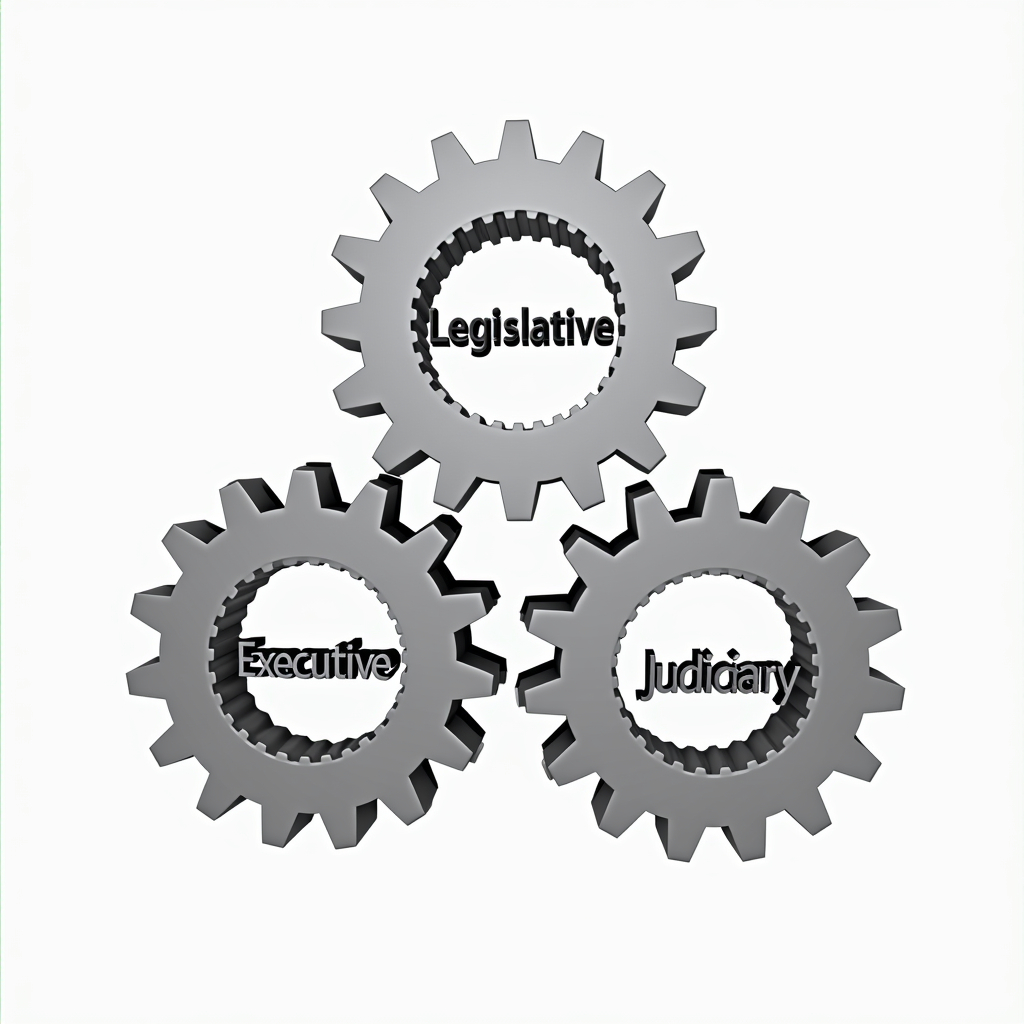
Basic structure doctrine as a check on amending power of the Parliament
The amending power of the Parliament under Article 368 is very wide. However, it has been subjected to the restrictions of the ‘basic structure’ as devised in case of Kesavananda Bharati vs. State of Kerala (1973). In this case, it was held that the Parliament can amend any part of the constitution including the fundamental rights, but it cannot amend the basic structure of the constitution. In case it amends the constitution in violation of the basic structure then such amendment will be declared as unconstitutional by the Apex Court. The question, what constitutes the basic structure has not been exhaustively enumerated by the Supreme Court. These elements have been discussed by the court in various cases. .
Role of the Parliament in removal of judges
The appointment of the judges to the High Court and the Supreme Court is made by the collegium system which is developed through a series of judgements. However, the process of their impeachment is provided by the Constitution. The judge of a Supreme Court or a High Court can either resign from his office by writing a letter to the President, but he cannot be removed from his office unless the President passes an order after an address by both the houses of the Parliament .
The procedure for the impeachment of the judges is provided under Article 124 of the Constitution on the ground of proved misbehaviour or incapacity. The procedure for investigation and the proof of the misbehaviour or incapacity of the judge is prescribed by the Judges Inquiry Act 1968.
Firstly, a notice of motion for presenting an address to the present for removal of the judge has to be provided. In case it is initiated by the Lok Sabha, it is to be signed by a minimum of 100 members and in case of Rajya Sabha by a minimum of 50 members of that house.
Next, the Speaker or the Chairman, that is the presiding officer of the house, may after consideration, admit or refuse to admit the motion.
Once the motion has been admitted, a committee of three members constituted by the presiding officer. The three members are to be selected as follows:
- Chief Justice or other judge of the Supreme Court
- Chief Justice of High Court
- Distinguish jurist
After the investigation by the committee, the report will be submitted to the presiding officer and is thereby led before the respective house in case the judge has been adjudged guilty.
The motion for removal along with the report will be taken up for consideration by the house and in case the motion is adopted as per the Constitution, an address for the removal of the judge will be presented.
Authority to enact an ordinance that carries the same weight as a law passed by the State legislature or the Parliament
In a democracy as a general rule, the legislature, either the centre or the state has been given the power to legislate laws. However, in certain contingencies, the President and the governor which form the part of the executive have also been given some legislative powers under Article 123 and 213. This power can be exercised by the President, where either of the two houses of the Parliament is not in session and thereby lawmaking via the usual route of Parliamentary deliberation is not available. The ordinance can be made on any subject on which the Parliament has the power to legislate in light of the seventh schedule. The importance of the ordinance was felt in cases where an action requires immediate action, and the President is satisfied about the urgency of the situation.
Even this ordinance is subject to the approval of the Parliament within six weeks of reassembly. In case it is not approved, it will cease to exist.
Members of the legislature serve as the leaders of various ministries
The members of the Lok Sabha, are elected by the general elections and the members of the Rajya Sabha are elected by indirect elections in the State Assemblies. They all form a part of the legislature. Whichever party forms the majority in the Lok Sabha the leader of such a party becomes the Prime Minister . The Prime Minister works along with his Council of ministers who are also chosen from either house of the Parliament . Therefore, a few members of the legislature also become the part of the executive, resulting in a clear overlap of personnel. This also clarifies the position making the executive answerable to the legislature. The strictest interpretation of separation of powers is incongruent with such set up.
Legislature can dissolve the government with a no confidence motion

A motion of no confidence is passed by the Parliament to showcase to the head of the state that the elected Parliament has lost its confidence in the present government. This vote of no confidence is usually introduced by the opposition party to make the incumbent government prove its majority on the floor of the house. This motion can only be moved in the Lok Sabha. If the motion is supported by a minimum of 50 members of the Parliament , the Speaker is duty bound to allot a date to discuss the motion.
This is an element of the collective responsibility of the executive to the legislature. The Prime Minister and the Council of ministers can only hold their office till the time they retain the confidence of the Lok Sabha and in case of failure, they are obligated to resign.
Power of the Parliament to impeach the President
Impeachment refers to the process by which a person is removed from a position of power. The process of impeachment of the President is provided under Article 61 of the Indian Constitution ordinarily the term of the President is five years. However, he can be removed prior to that on the ground of violation of the Constitution.
Under the Indian Constitution, either house of the Parliament can initiate the charges of impeachment against the President. The charge must be signed by at least one fourth member of the house initiating it, and the President must be given a notice of 14 days. The charges are then sent to the other house for investigation. The President has the right to appear before the investigating house. The motion for the removal, if passed by 2/3rd majority has the effect of removing the president from the office. In India, no President has been impeached yet. The process of impeachment also acts as a check on the executive by the legislature.
Council of ministers who aid the Executive head are selected from the legislature
The members of the executive are selected from the Parliament. These members of the Parliament also act as the ministers of various different heads like finance, external affairs, etc. Under the Constitution of India, the President has to act as per the aid and advice of the Council of ministers which is headed by the Prime Minister .
Therefore, in effect, the Council of ministers are actually the members of the legislature and the President has to exercise his powers, except as otherwise provided by the Constitution, in line with the advice given by these Council of ministers.
Judicial review to examine executive action
Judicial review is the tool developed by the judiciary to check the constitutionality of any legislative or executive action. in case any such action is violative of the basic structure of the Constitution that act or action is liable to be declared invalid or unconstitutional.
Justice P. N. Bhagwati, in the case of Minerva Mills ltd. vs. Union of India (1980) stated that, “ it is for the judiciary to hold the Constitutional values and to enforce the Constitutional limitations, that is the essence of the rule of law. The exercise of powers by the government, whether it be legislative or executive or any other authority, be by the Constitution and the law.”
The administrative decisions in India can be brought under view of judicial review on the following grounds:
- Jurisdictional error, wherein the administrative authority has exceeded jurisdiction or excise any power without jurisdiction
- Irrationality, the exercise of administrative authority must be reasonable and not arbitrary
- Procedural impropriety, every procedure provided must be compliance with the natural justice principles
- Proportionality, every action must be taken in proportion to the goal. It seeks to achieve. For example, a sledgehammer must not be used to crack a nut.
Basic structure of the Constitution cannot be amended by the Parliament
The tussle between the Parliament and the judiciary was nowhere more express, then, in the case of the power of the Parliament to amend the fundamental rights. In the case of IC Golak Nath vs. State of Punjab (1967), the Apex Court had wrongly stated that the fundamental rights cannot be amended by the Parliament. However, in the landmark case of Kesavananda Bharati vs. State of Kerala, (1973), the Supreme Court stated that the Parliament has the amending powers to modify or amend even the fundamental rights. However, it cannot make any changes to the basic structure of the Constitution. Interestingly, what constitutes the basic structure was not exhaustively laid down and had to be decided by the judiciary on a case to case basis. The Apex Court has played a proactive role in enumerating various features of the Indian Constitution, which would come under the basic structure and can thereby not be amended by the Parliament .

Therefore, while the Parliament is the Supreme law making body of the country, the basic structure doctrine enunciated by the Supreme Court acts as a check on the abuse of this power by the Parliament .
Appointment of the judges of the Supreme Court and the High Courts
In India, the appointment of the judges to the Supreme Court and to the various High Court is guided by the collegium system. Whenever vacancy is expected to arise, the Chief Justice of India, initiates the proposal for the recommendation of the appointment of the judges.
Opinion of the Chief Justice of India, for appointment of the judge of the Supreme Court is formed in consultation with the collegium of four other senior most judges of the Apex Court. The opinion of the Chief Justice and the four judges must be transmitted to the Department of Justice, Ministry of Law and Justice, who would put the recommendations to the Prime Minister and then it is him who will advise the President in the matter of appointment.
Once the appointments are approved by the executive and the President signs the warrant of appointment, the Secretary to the Government of India in the Department of Justice informs the Chief Justice of India about the same.
Here and it is clear that while the primary recommendations for appointment come from the judiciary itself, nevertheless, there is a requirement of the executive seal on the decision.
Power of executive to commute sentences, reprieves, respites, or pardons to convicted persons
The adjudication of various disputes and crimes falls within the exclusive ambit of the judiciary. The courts are duty bound to decide the cases on merits and award sentences of punishment as per the gravity of the crime. Once the accused has been sentenced by the court he has the option to approach the President or the governor for the reprise, despite commutation or pardon of sentence.
These powers of the President and the governor are found under Article 72 and Article 161 of the Constitution, respectively.
Here, we see that while the awarding of sentences is the power of the judiciary, nevertheless, the executive organs have been given the power to sideline the decision of the courts.
Matters related to money bills
A financial bill can only be introduced on the recommendation of the President as per Article 117 of the Constitution. While the legislature has the power to make an act or amend the provision on any subject matter, matters specifically mentioned under Article 110 require a pre-recommendation by the president. Additionally. The power of the President to send the bill for reconsideration to the Parliament is not available in case of a money bill.
This implies that once the money bill has been passed by the Lok Sabha and the Rajya Sabha, the President is required to either give his assent to the bill or withhold ascent, but he cannot send it back, but reconsideration. on a practical note as a money bill comes within the ambit of financial bill and can only be introduced on the recommendation of the President. Therefore, on the final stage of granting assent, the aspect of withholding the assent rarely occurs.
Important and relevant case laws
In Re Delhi laws case (1951)
In case the validity and the limit upon delegation of power. Although in India we have recognised the separation of powers doctrine, however the process of delegation of power has blurred the divisive lines between the three organs. To clarify the position, the question of delegation of powers was referred to the Apex Court by the President under Article 143 of the Constitution.
The judges agreed that in the modern state setup, the delegation of some power by the legislature is inevitable, as in view of the multiple problems and differing situations present in the country, one comprehensive all inclusive legislation cannot be formulated by the legislature. The need to leave some gaps which could be filled in as per the situations is essential. Therefore if the policy has been laid down in the Act broadly, the details can be formulated by the delegated authority.
Justice Kania, broadly concluded three points:
- Legislation is the primary function of the legislature and in normal circumstances only that body should perform such function.
- In some circumstances there legislative powers may be delegated by the legislature, when the power is only ancillary to and necessary for the full and effective powers.
- These powers cannot be abdicated in favour of any other body which results in creation of a parallel legislature.

However, when it is expressly provided that one organ shall not perform functions of the other, then it is prohibited. In the Delhi laws case, it was stated that the legislature should exercise all the powers of legislation only in extraordinary circumstances like when Parliament is not in session or emergency. We can say that the legislature is created by the Constitution to enact the laws.
I.C. Golaknath vs. State of Punjab (1967)
In this case the question arose whether the Parliament can curtail or nullify the fundamental rights granted to the citizen by the Constitution?
Herein the right to property was alleged to be violated by the Punjab government by bringing in the Punjab security and the Land Tenures Act, 1958. The Act provided a land ceiling limit of 30 standard acres and the land in excess of the limit had to be forgone. Herein the Court decided in favour of the petitioner’s right to property and the Act was declared to be unConstitutional.
This case was very important as prior to this the amending power of the Parliament was considered supreme. However after this case, the amending power was curtailed by the pronouncement of the Apex Court.
In relation to the doctrine of separation of powers it was stated that the Constitution brings in actuality the distinct Constitutional entities i.e namely, the Union territories, Union and State. It also has three major instruments namely, judiciary, executive and legislature. It demarcates their jurisdiction minutely and expects them to exercise their function without interfering with others functions. They should function within their scope.
If we go through the Constitutional provision, we can find that the doctrine of separation of powers has not been accepted in a rigid sense in India. There is personnel overlapping along with the functional overlapping.
The Supreme Court can declare any law framed by the legislature and executive void if they violate the provisions of the Constitution. Executive also has an impact on the functioning of the judiciary as they appoint the judges and Chief justice.
Indira Nehru Gandhi vs. Raj Narain (1975)
In this case the validity and the Constitutionality of Article 329A was in question which was added by the 38th Constitutional amendment. This provision sought to take the election dispute related to the office of the Prime Minister out of the view of judicial review by the Apex Court. The Court stated that the judicial review is a part of the basic structure of the Constitution, and it cannot be meddled with by the Parliament .
It was further held that In our Constitution the doctrine of separation of powers has been accepted in a broader sense. Unlike in the American and Australia Constitution where a rigid principle of separation of powers applies.
Justice Chandrachud also expressed his views by stating that, “The political purpose of the doctrine of separation of powers is not widely recognized. No provision can be properly implemented without a check and balance system. This is the principle of restraining which has in its precept, innate in the prudence of self- preservation, that discretion is better than its valour.”
Rai Sahib Ram Jawaya vs. The State of Punjab (1955)
In this case, the books which were approved for the schools in Punjab were prior to the independence prepared by various publishers, and out of them, the government selected a few. After independence, the government took up the task to prepare the reading material on specific subjects without inviting any publishers or writers. For other subjects, only one single text was approved. Further the proposals were only accepted from the authors and from the publishers.
This legislation was challenged from the ground that the actions of the executive were ultra wires as they did not have any legislative backing and the executive health overreached its functions. So the issue was whether the executive required special legislation to do such an act.
The Court finally held that although the Constitution provides for a broad separation of powers between the three branches. In the modern state due to the complexity of the nature of work, some overlap is bound to arise. Further, the Court also stated that there is no strict separation of powers provided by the Indian Constitution. In the present era, the executive needs to fulfil the duty of social welfare and therefore every action of the executive need not be backed by any proper legislation.
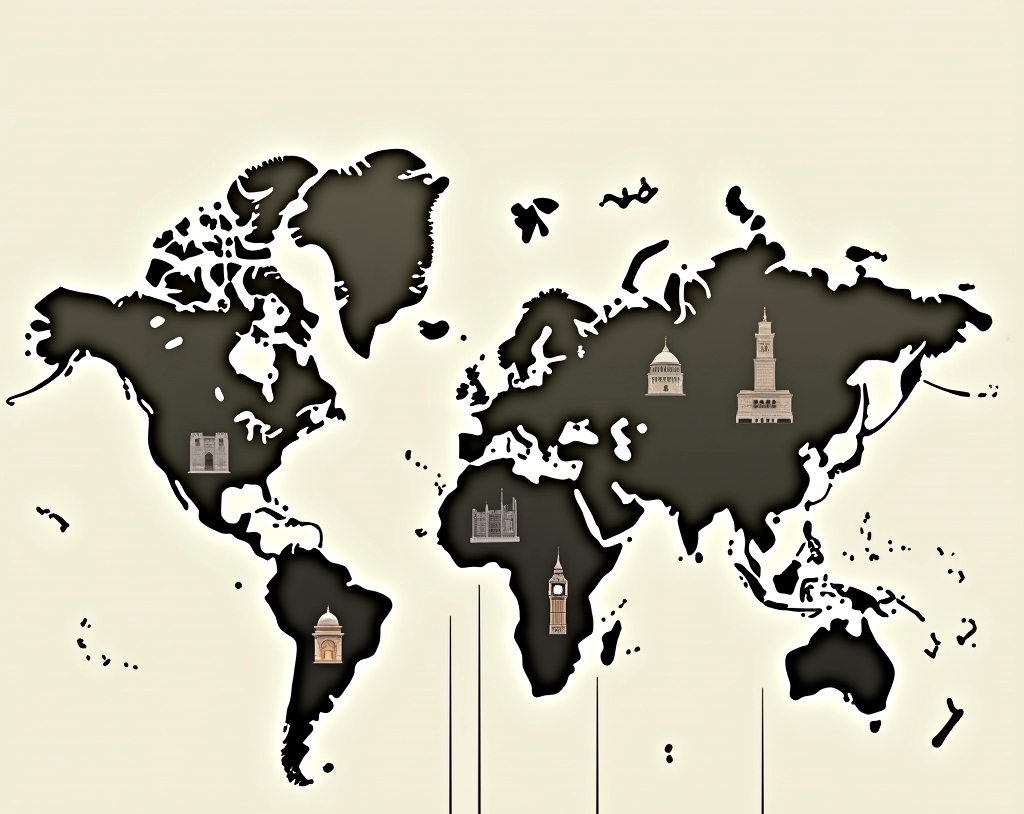
In this case, Justice Mukherjee observed that, “In India, this doctrine has not been accepted in its rigid sense but the functions of all three organs have been differentiated and it can be said that our Constitution has not been a deliberate assumption that functions of one organ belong to the another. It can be said through this that this practice is accepted in India but not in a strict sense. There is no provision in the Constitution which talks about the separation of powers except Article 50 which talks about the separation of the executive from the judiciary but this doctrine is in practice in India. All three organs interfere with each other’s functions whenever necessary.”
University of Kerala vs. Council of Principal’s, Colleges, Kerala (2010)
In the case, Justice A.K. Ganguly presented his views on the doctrine of separation of powers. it was stated that the doctrine of separation of powers entails the holding of individual liberty and the rule of law if the power is concentrated in one authority, that would obviously promote tyranny.
He stated that the origin of the doctrine can be traced back to Aristotle, who provided for a three organ system, first being the deliberative, second the magisterial and third the judicial.
This doctrine seeks to preserve human liberty by avoiding the concentration of power in one person. The doctrine of separation of powers or the division of authority is broken into the fabric of the American Constitution. However, in no modern state a rigid or a complete practice of separation of powers is possible. The legislative, executive and judicial functions are bound to overlap as the powers that the three organs exercise are coextensive.
In England, this doctrine has not been given a Constitutional status. However, in several judgements, the essence of the doctrine has been acknowledged wherein it has been stated that in the absence of a statute, judges are virtually lawmakers.
In the Indian Constitution, no express incorporation of the doctrine of separation of powers can be found. Under Article 53(1), the executive power of the union is said to be vested in the President and similarly the executive power of the state is vested in the Governor under Article 154. However, as far as the judicial and the legislative powers are concerned, no such vesting clause is found.
Under our Constitution, the executive head is vested with legislative powers in some extraordinary instances. For example, the ordinance making powers granted under Article 123, and Article 213 to the President and the governor respectively. Further as per Article 103 and Article 192, the legislature has been granted the power to exercise some judicial functions. Further under Article 145, 146, 227 and 229, the judiciary is also granted certain legislative and executive powers. Further, by the setting up of the tribunal, the executive also exercises quasi-judicial powers. These tribunals are very similar to a court and decide the disputes between the parties. The legislature, that is the Parliament, also has the power to decide upon impeachment of the judges under Article 124 and 217 and in respect of contempt of legislature under Article 194.
Bhim Singh vs. Union of India (2010)
In this case the Apex Court stated that India is a modern Parliamentary democracy there is no strict prohibition upon the overlapping of functions within the three branches of the government. However, there is a prohibition on exercise of functions of another as it would result in doing away with the Constitution accountability. Where accountability is preserved, the principle of separation of powers is said to be preserved. Each branch of the government must be conscious that it respects the institutional division among the branches. By the Constitution, what is required is not only that the right decisions must govern the citizens, but also that those right decisions are made by the right institutions. This legitimacy of the source grants the legitimacy to the resultant legislation, policy decision or court adjudication.
In the Indian context abroad, demarcation of areas of operation has been made under the Constitution among the three organs. The Indian judiciary is tasked with the duty to determine whether the limitations have been transgressed and ensure that the Constitution is not violated. The government is duty bound not to overstep their Constitutional limits and violate the basic structure of the Constitution. By the doctrine of judicial review, the quotes have to examine the legality and validity of the legislation or a particular government action on the lines of the Constitution and are not there to question the wisdom or the merits of the decision of the government.
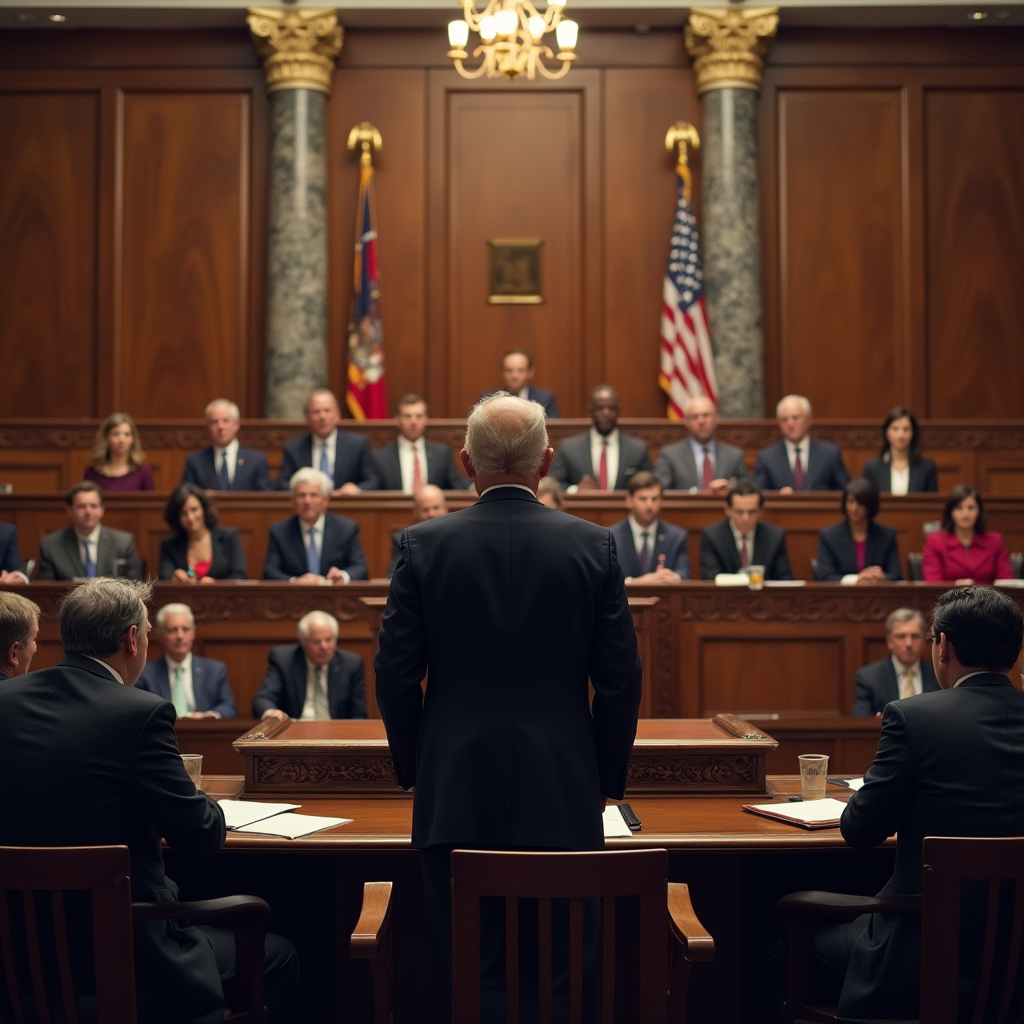
Ashwini Kumar Upadhyay vs. Union of India (2023)
In this case, a writ petition was filed by the advocate Ashwini Kumar Upadhyay before the Supreme Court under Article 32 of the Constitution. In the petition, he urged the Court to pass a writ of mandamus to the Parliament, to raise the minimum age of marriage for women to 21 years from the existing 18 years in order to bring it at par with the minimum age of marriage for men and set a uniform marriage age. The three judge bench headed by the honourable Chief Justice of India, Dr. D.Y.Chandrachud, stated that the Supreme Court cannot issue a writ of mandamus to the Parliament on this issue and it was within the jurisdiction of the legislature to consider the matter. Thereby establishing the separation of powers between the different organs.
The Court further stated that,“We must defer to Parliament. We can’t enact law here. We should not perceive that we’re the exclusive custodian of the Constitution. Parliament is also a custodian.” Consequently, the petition was dismissed.
Supriyo @ Supriya Chakraborty & Anr. v Union of India (2023)

This case was related to the issue of legal recognition of same-sex marriages in India. One of the contentions put forth by the petitioners was that, The Special marriage Act 1954 is violative of Articles 14, 15, 19, 21 and 25 of the Constitution of India as it does not provide for the solemnisation of marriage between the same sex or LGBTQ couples. Further, they contended that the words, “husband” and “wife” under the Act, be replaced by other gender neutral terms like “party” or “spouse”.
The Apex Court stated that, it does not have the power to either strike down the constitutional validity of the Special Marriage Act or read words into the Act due to its “institutional limitations”, the reading of words into the provision of the Act and other allied laws like The Indian Succession Act 1925 and Hindu Succession Act 1956 would amount to judicial legislation. The Court further stated that in the exercise of its power of judicial review, the court must stay clear of matters, specially those which impinge on policy, as that falls exclusively within the legislative domain.
Implications of separation of powers
The doctrine of separation of powers seeks to prevent the centralization of power in one hand. As history has repeatedly demonstrated, centralisation of power in one or a few hands can lead to disastrous outcomes.
The application of this principle makes the government liable, accountable, and answerable to its citizens for its actions, thereby aiding in the promotion and protection of human rights. This eliminates one of the most serious weaknesses of other forms of administration, such as monarchy or dictatorship, in which the king is not accountable to his people.
When applied, the principle creates a balance of powers inside the government, in which each of the government’s bodies’ functions are kept in check by the others while remaining independent of one another. This assures that the laws are just, fair, and adhere to the natural justice ideal. Furthermore, because it is independent of the other departments, the court can administer equitable justice. Democracy is flawed without separation of Powers.
Global application of separation of powers
Separation of powers has been accepted and adopted across the globe. The United States has embodied the doctrine in its Constitution in the true sense. The theory of separation of powers in various aspects has been included in certain other Constitutions around the world, for example, the Australian Constitution, Sri Lankan Constitution, the French Constitution, et cetera, which have been discussed below in detail.
United States of America
The concept of separation of powers is quite specifically stated in the US Constitution. It gives Congress, which consists of the Senate and the House of Representatives, legislative authority. The President has executive authority, and the Supreme Court and any further Federal Courts that Congress may establish have judicial authority, just like in india. The Constitution specifically outlines the President’s powers, and he is elected in a separate election for a fixed term of four years. He is tasked by the Constitution with ensuring that the country’s laws are faithfully carried out. Unlike India, where the President is the ‘de jure’ head, the American President is both ‘de jure’ and ‘de facto’ head.
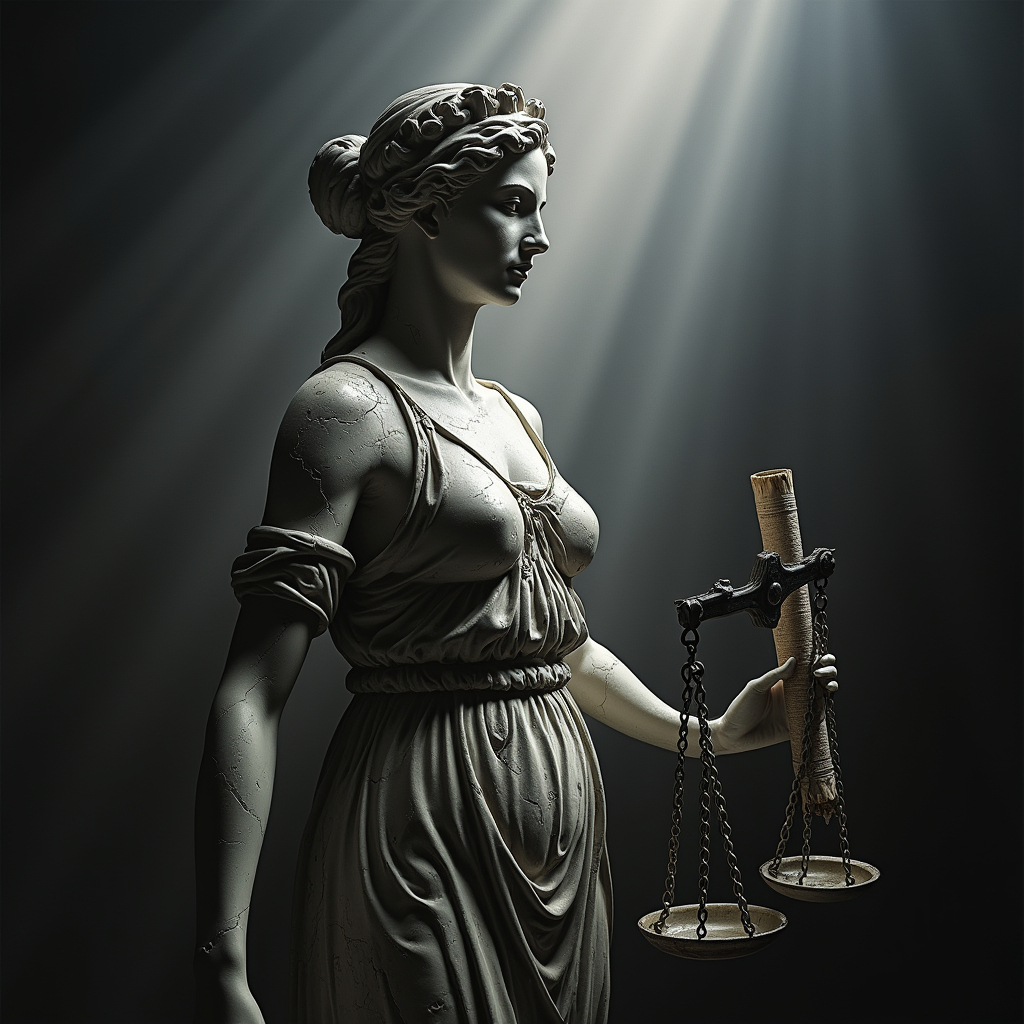
The President has the authority to nominate and dismiss the executive officers known as the Cabinet, who are in charge of the major state departments. This is done to maintain the separation between the executive and legislative branches of government. Neither the President nor any of his secretaries may be members of the Congress, and any member of the Congress may join the government only after resigning from his membership.
The President is normally irremovable from office, but the Senate has the power to remove him through the process of impeachment if he commits high crimes and misdemeanours such as bribery or treason. Even in India, the President can be impeached by the Parliament on the grounds of violation of the constitution.
The President of the United States is responsible for nominating a candidate to fill the vacancy. However, this nomination is submitted to the Senate and is further referred to the Senate judiciaryCommittee. The nomination is then debated on the Senate floor. Senators discuss the nominee’s qualifications and the potential impact on the Supreme Court. The full Senate votes on the nomination. This process of appointment of judges stands in absolute contradiction to the Indian system of the collegium system. In India, the Parliament has no role in the appointment. Further in the india system the initiation of appointment is from the collegium unlike the american system of initiation coming from the president.
However, once nominated, the Supreme Court’s judges are not subject to the authority of either Congress or the President. But they too could be impeached like the Indian judges.
United Kingdom
Like the United States, the United Kingdom does have a concept of separation of powers; however, it exists in the country more on an informal note. The United Kingdom has adopted more from Black Stone’s “mixed government” with checks and balances doctrine.
The United Kingdom does not have a written Constitution and it works in the spirit of constitutionalism, therefore, we don’t find a formal division of powers. Nevertheless, any Act of Parliament that grants any power in violation of the concept may be deemed unconstitutional. The Parliament continues to have undisputed authority, and as a result, the Crown rules through ministers who are elected by and answerable to the Parliament . The aspect of answerability of the ministers to the Parliament is a common element between India and U.K.
The Act of Settlement, 1700, effectively cemented the judiciary’s independence. The Supreme Court operates with its powers separated from those of Parliament . The Constitutional Reforms Act of 2005‘s Section 61 outlines the structure for judicial appointments. Commission responsible for choosing judges for the Supreme Court and the Court of appeals. Thus, the Constitutional Reforms Act of 2005 has generally ensured the independence of the court.
The three branches continue to significantly overlap and are not properly divided. Administrative tribunals rather than regular courts handle many issues that emerge during the course of government. In India as well, we have seen an increase in tribunalisation, in matters of administrative disputes etc. However, by preserving key components of “fair judicial procedure“, the impartiality of the tribunals is kept intact.
Senior justices have frequently stated that a division of powers is the foundation of the British Constitution. It cannot be emphasised enough how deeply rooted in the separation of powers the British Constitution is while being mostly unwritten.
Australia
The separation of powers in Australia is achieved by the partition of the Australian organs of government into the legislative, executive, and judicial branches. According to this theory, laws are created by the legislative, implemented by the executive branch, and then interpreted by the court. The word and its use in Australia are a result of the Australian Constitution’s language and structure, which draws its inspiration from democratic ideas ingrained in the Westminster system, the idea of a ‘responsible government’, and the American interpretation of the separation of powers.
The Australian political system does not always exhibit a strong separation of powers, however, as a result of the Westminster system’s norms. The executive is required to be chosen from the legislative and must uphold its trust, resulting in a fusion between the two. Even in the Indian framework, the executive, i.e, the Council of Ministers are selected by the legislature and therefore, the former are responsible to the latter.
The Parliament , the executive government, and the judiciary are the respective headings of the first three chapters of the Australian Constitution. Parliament serves as the legislative branch of government. Ministers and the departments and agencies they oversee make up the executive branch. Judges and courts make up the judicial branch of government. Each of these chapters starts with a section that vests the applicable power of the Commonwealth to the proper people or organisations. On the other hand, responsible governance, in which the legislative and the administration are essentially one, is a feature of the Constitution. However, there is a lot of overlap in terms of both individuals and activities because the ministry (executive) is chosen from and answerable to the Parliament (legislature). However, the distinction between the judiciary and other organs is clearer.
Canada
In Canada, the separation of powers is a fundamental principle of governance designed to ensure that the different branches of government operate independently and check each other’s powers.
The executive branch is headed by the Prime Minister , who is the leader of the Federal Government, and includes the Cabinet, composed of ministers responsible for various government departments and agencies. The legislative branch consists of the Parliament of Canada, which is bicameral, comprising two houses: the House of Commons and the Senate. The House of Commons is elected by the public, while Senators are appointed. Like the Indian polity, the executive must obtain legislative approval for its policies and budget. The Prime Minister and Cabinet are drawn from the elected members of the House of Commons and must maintain the confidence of this house to remain in power. The legislative branch can hold the executive accountable through mechanisms like question periods, debates, and votes of no confidence. Similar to the Indian mechanism, laws passed by Parliament can be challenged in court, and the judiciary has the authority to strike down laws that are unconstitutional. According to the Supreme Court of Canada, the Constitution of Canada’s core value is judicial independence. When it comes to carrying out their responsibilities and making decisions, the courts are separate from the elected branches. Therefore, the Canadian system has numerous similarities with the Indian set up.
France
In France, the principle of the separation of powers is embodied in its constitutional framework and reflects the need to maintain a balance between the different branches of government. The French system combines elements of both presidential and Parliamentary systems, and the separation of powers is designed to ensure that each branch operates independently while providing checks and balances on one another.
In France, the principle of the separation of powers is embodied in its constitutional framework and reflects the need to maintain a balance between the different branches of government. The French system combines elements of both presidential and Parliamentary systems, and the separation of powers is designed to ensure that each branch operates independently while providing checks and balances on one another. Appointed by the President, the Prime Minister is the head of government and is responsible for running the day-to-day operations of the government, implementing laws, and setting domestic policies. The Prime Minister leads the Council of Ministers, which is composed of various ministers responsible for different government departments.
Like Prime Ministers in many parliamentary democracies, the French presidents have supreme executive authority and significant policy making powers. At the same time, French presidents also serve as the head of state, are popularly elected, and cannot be voted out of office by Parliament . Unlike India where the President is elected by the electoral college, the French President is directly elected by the people. However, the President appoints the Prime Minister in both the jurisdictions which have the popular support of the legislature as the Prime Minister and the Council of Ministers must retain the confidence of the National Assembly to stay in power.
The legislative, the executive branch, and the judiciary are the other three separate branches that make up the French government. The laws are made by the legislature. These laws are carried out by the executive branch. The executive branch can, however, use its veto power to block the passage of a particular statute. This is a method of controlling the legislature. Additionally, the judiciary has the authority to judge whether a law approved by the legislature is Constitutional. If a President or judge isn’t carrying out their responsibilities properly, the legislative branch has the authority to have them removed. The legislative branch gives its approval to the judges chosen by the executive branch.
Merits of doctrine of separation of powers
The theory of separation of powers in its strictest form is considered undesirable and unworkable. As a result, it is not entirely acknowledged in any nation on earth. However, its importance resides in emphasising the checks and balances that are required to avoid abuse of the vast executive powers.
It creates a system of checks and balances
One aspect of the theory of separation of powers is checks and balances. According to this characteristic, each organ has certain checking abilities over the other two organs in addition to its own power. The inter-organ relationships are governed by a system of checks and balances during the process. The separation of powers thesis was good in principle. When it was attempted to be utilised in actual life circumstances, however, various flaws became apparent in practice.
For instance: in the Indian setup, this can be seen, wherein the Apex Court has been granted the power of judicial review to check the constitutionality of the legislations passed.
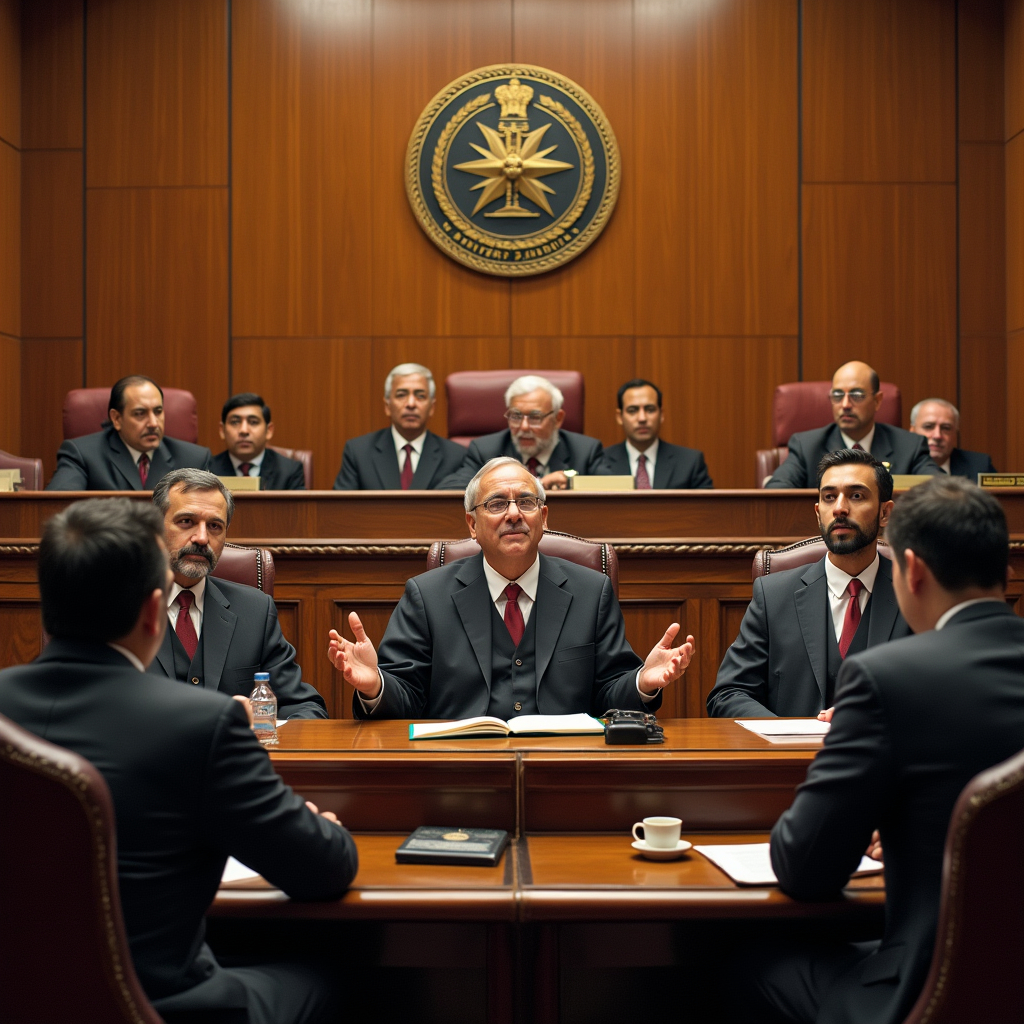
It protects the rights and liberty of the citizens
According to the doctrine of the separation of powers, an individual’s freedoms and rights are protected, and they are shielded from various types of dictatorship and oppression.
For instance: in the Indian set up, the Supreme Court has been vested with the writ jurisdiction under the blanket of constitutional remedy as mentioned under Article 32 of the Constitution. According to this Article, the Apex Court can issue writs in the nature of Habeas Corpus, Mandamus, Certiorari, Prohibition and Quo Warranto in case of violation of fundamental rights by the State. Thereby, the judiciary acts as the guardian of life and liberty.
Enhanced government efficiency
As authority is divided across government agencies, these agencies learn in-depth information about the issues they are responsible for and improve their effectiveness. The tasks required in governance are sometimes too many for one branch of the government to handle. Therefore, the division of powers aids in lightening the strain on each individual branch of government.
For instance: The broad outline and agenda of the proposed legislations are introduced by the legislature. The in-depth discussion and formulation of the specific provisions is carried on by the specific committees and the actual implementation of such legislations is carried on by the executive.
It encourages order in governance
Each of the three branches of the government is given a certain set of responsibilities. Each person would have to do their part solely if the concept were to be strictly followed. This guarantees that the state is run in an orderly manner
For instance: The sphere of legislating laws belongs to the legislature. The sphere of implementation of those legislations belongs to the executive. The sphere of adjudication of disputes that arise after the implementation belongs to the judiciary.
It prevents abuse of authority
The separation of powers is an excellent safeguard against the abuse and haughtiness of power. Because various departments are given varying degrees of authority, the emergence of a dictatorship is prevented. The idea is sound in that it can restrain tyranny on the part of those in authority. The idea makes sure that too much authority is not centralised in one branch of the government. By doing this, the desire to misuse authority is avoided.
For instance: when an emergency is proclaimed under Article 356 of the Constitution by the President on the aid and advice of the council of ministers, such proclamation has to be approved by the Parliament for it to remain in continuity within one month. Further, the grounds of proclamation of such emergency is also susceptible to the power of judicial review. Both of these provisions ensure that the authority is not abused by any organ of the governance.
It aims to achieve judicial independence
The idea of judicial independence holds that the judiciary ought to be separate from the other arms of the government. In practically every Constitution, the judiciary is granted the authority to decide all Constitutional problems and the authority to deem the actions of the other branches of government null and invalid. The idea of the separation of powers contributes to bolstering the judiciary’s independence in carrying out its duties.
The judicial system is the guardian of the rights of the people provided under Part III of the Constitution. Therefore, it is very essential that the judiciary place its role independently without any undue influence. The most important aspect to ensure judicial independence is by reducing the executive impact on the appointment process. In the Indian system, it is the collegium which has the primary role in the appointment of the judges of the Supreme Court and the High Court. For unless the motion for the removal of a judge is in action in the Parliament , there can be no discussion on the conduct of the judges in any of the houses.
Contemporary problems in the application of Separation of Powers
The principle of separation of powers has been adopted by the majority of the nations. That has not made the idea protected from critique. It has often been labelled as an undesirable idea in addition to it being impossible.
As per Sabine, “Montesquieu was guilty of oversimplification. He united his theory to a hasty and superficial analysis of the Constitutional principles of liberty.”
According to Finer, it is useless to rigorously apply the doctrine of the division of powers to contemporary circumstances.
The following arguments have been used to refute the doctrine of separation of powers.
Question of workability of the doctrine of Separation of Powers
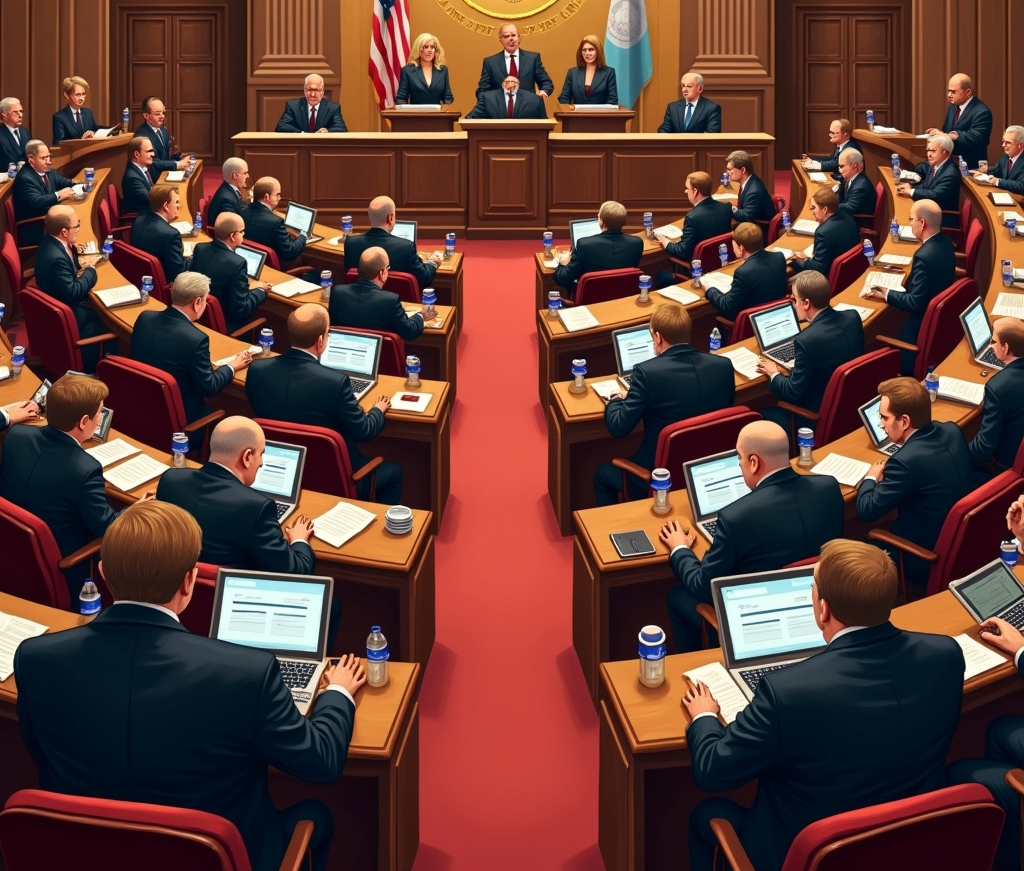
It hasn’t been discovered that concentrating one sort of power in one organ alone is conceivable in practice. In addition to being a body that makes laws, the legislature also has oversight responsibilities for the executive, which is an administrative entity. The judiciary has some rule-making authority in relation to the process and procedure in the courts, in addition to performing judicial duties.
This notion is not entirely achievable. The legislature also has some judicial duties, while the executive plays a little part in rulemaking. The legislature, for instance, carries out judicial actions like impeachment.
Separation of powers causes administrative challenges, which is number three. Making the government’s organs cooperate, coordinate, and live in harmony becomes challenging. Modern governments must “coordinate” their powers rather than strictly separate them in order to function effectively.
Increase in incidents of deadlocks
The division of powers might result in impasses and ineffective government operations. It could lead to circumstances where each organ engages in combat and becomes stuck with the other two organs.
The division of powers can occasionally cause rivalry, mistrust, and conflict amongst the several branches of government. It might cripple the government while causing discord and uncertainty. As a result, even in times of emergency, the government frequently makes poor judgments. The principle of the separation of powers, in Finer’s words, “throws governments into alternate phases of coma and convulsion.” According to a different academic, “division of powers equals confusion of powers.”
Power inequality
Although this theory is founded on the equality of powers assumption, this premise has flaws. While the administration is most powerful under a presidential system, the legislature, which represents the people, is most powerful in a Parliamentary one.
Separation of powers is one of the factors that contribute to liberty, but it is not the only one. Liberty also heavily depends on people’s minds, perspectives, political awareness, customs and traditions, basic rights, the rule of law, the independence of the judiciary, economic equality, and other factors.
Could upset the balance of power
As it carries out several crucial tasks, the government has become stronger. It is necessary to offer welfare to the people in addition to solving problems and managing crises. All of this has increased the executive’s authority and thrown off the balance between the three branches of government. Not so much the “division” of authorities as their “fusion” is necessary for planning, security, and welfare.
As a result, the theory of separation of powers in its strictest definition is seen as undesirable and unworkable. As a result, it is not entirely acknowledged in any nation on earth. However, its importance resides in emphasising the checks and balances that are required to avoid abuse of the vast executive powers.
Conclusion
“Power corrupts and absolute power tends to corrupt absolutely” – Lord Action.
This statement is as true today as it has been historically. The doctrine of separation of powers is a reality of contemporary democratic societies. This doctrine is important not only for the effective working of the state and various branches of the government but also to avoid any despotic use of power.
In my opinion, the criticisms stated above are mainly due to an erroneous understanding of the idea enunciated by Montesquieu. What he envisaged was the separation of executive, legislative and judicial powers. He wanted that these three powers must not be placed in the same body. This idea is very well represented in the Indian set up. Whenever the question is asked, ‘who is the lawmaking body of the nation?’ The answer unambiguously is, the legislature. Similarly the answer to the question about the repository of executive and judicial powers is, the executive and the judiciary respectively. It is no one’s argument that the primary law making functions performed by the judiciary the legislature is the body adjudicating disputes between individuals or entities. Indubitably, we do find some features of law being given to the executive (ordinance making power) or features adjudicators or punitive powers given to the legislature (breach of privilege proceeding).

As far as the question of one organ having some control over the other, for instance, removal of the judges or the impeachment of the President by the legislature, these are considered only a method of checks and balances which indeed formed the bedrock of the doctrine of separation of powers. The ultimate aim of the principle has always been to prohibit and prevent the tyrannical or arbitrary exercise of powers and thus the mechanism of checks and balances only seeks to serve that purpose.
Frequently Asked Questions (FAQs)
Has China included separation of powers in their government set up?
”We must never follow the path of Western ‘constitutionalism,’ ‘separation of powers,’ or ‘judicial independence’, these were the words of Xi Jinping, the Chinese president. The Chinese communist party leads everything from the Party, government, military, civilian, and academic, east, west, south, north, and centre. Further the amendment to Article 1 of the Constitution which in effect removed the two term limit for the President and the vice President was seen as a move to further the position. The fact that it’s a country with only ‘one party’ system, furthers the fact that the country and its leadership does not believe in separation of power.
How does the United Kingdom maintain a separation of power without a written constitution?
In the UK, the major offices and institutions have evolved to achieve balance between the Crown (and more recently the Government) and Parliament . The system resembles a balance of powers more than a formal separation of the three branches, or what Walter Bagehot called a “fusion of powers” in The English Constitution.
Therein the various functionaries of the government are closely linked. The Prime Minister is both the head of the executive and usually the leader of the majority party in the legislature.The UK’s Constitution is based on a combination of laws passed by Parliament , historical practices, and court decisions. The executive branch has a significant influence on the legislative branch.
References
- https://www.wrs.edu/assets/docs/Journals/2009b/Cole–Calvin_Civil_Government.pdf
- https://www.livelaw.in/columns/tribunalisation-in-India-where-we-are-lacking-162949
- Separation of political powers: boundaries or balance- Alan L. Feld
- Montesquieu and the separation of powers: James T. Brand
- Montesquieu, The Spirit of the Laws
- John Locke, Civil Government, chapter 14
Students of Lawsikho courses regularly produce writing assignments and work on practical exercises as a part of their coursework and develop themselves in real-life practical skills.
LawSikho has created a telegram group for exchanging legal knowledge, referrals, and various opportunities. You can click on this link and join:
Follow us on Instagram and subscribe to our YouTube channel for more amazing legal content.
 Serato DJ Crack 2025Serato DJ PRO Crack
Serato DJ Crack 2025Serato DJ PRO Crack


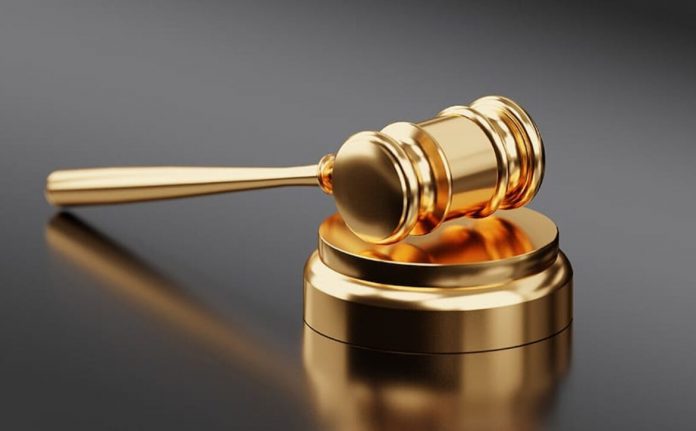







 Allow notifications
Allow notifications




India follow separation of power or separation of function